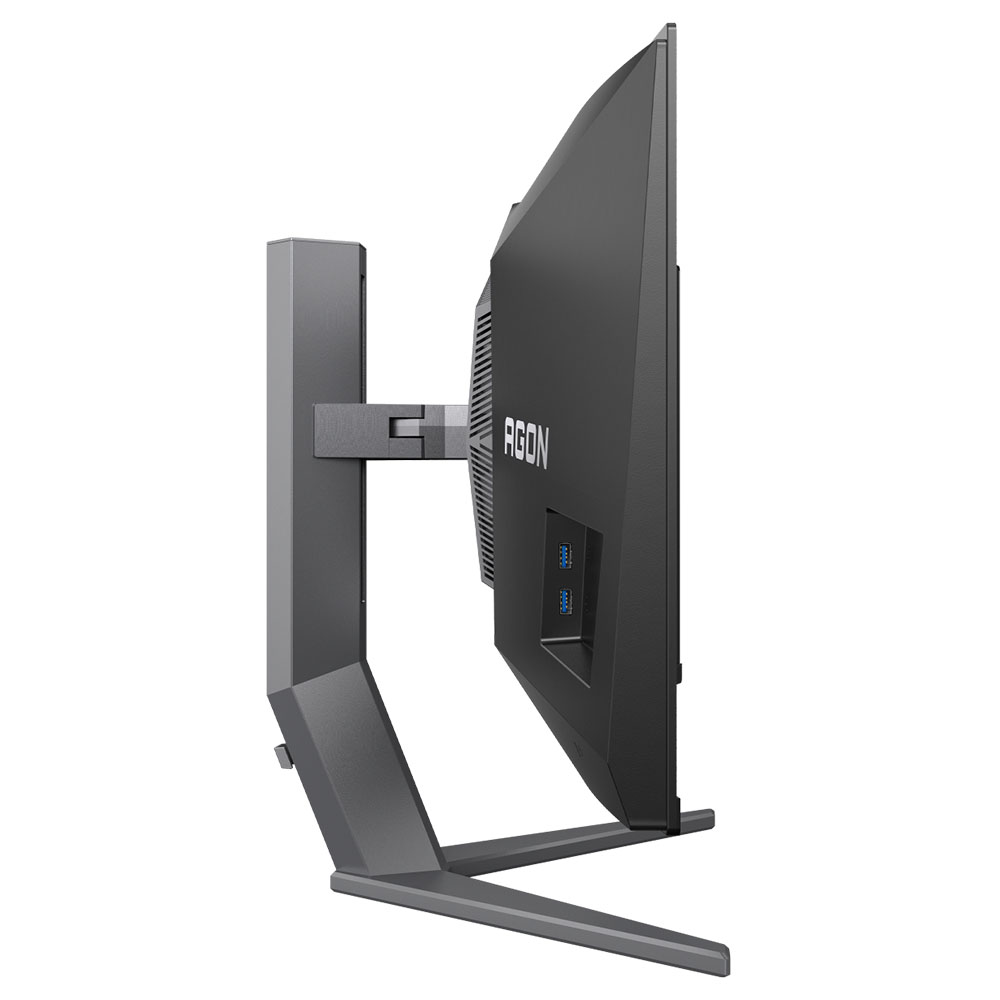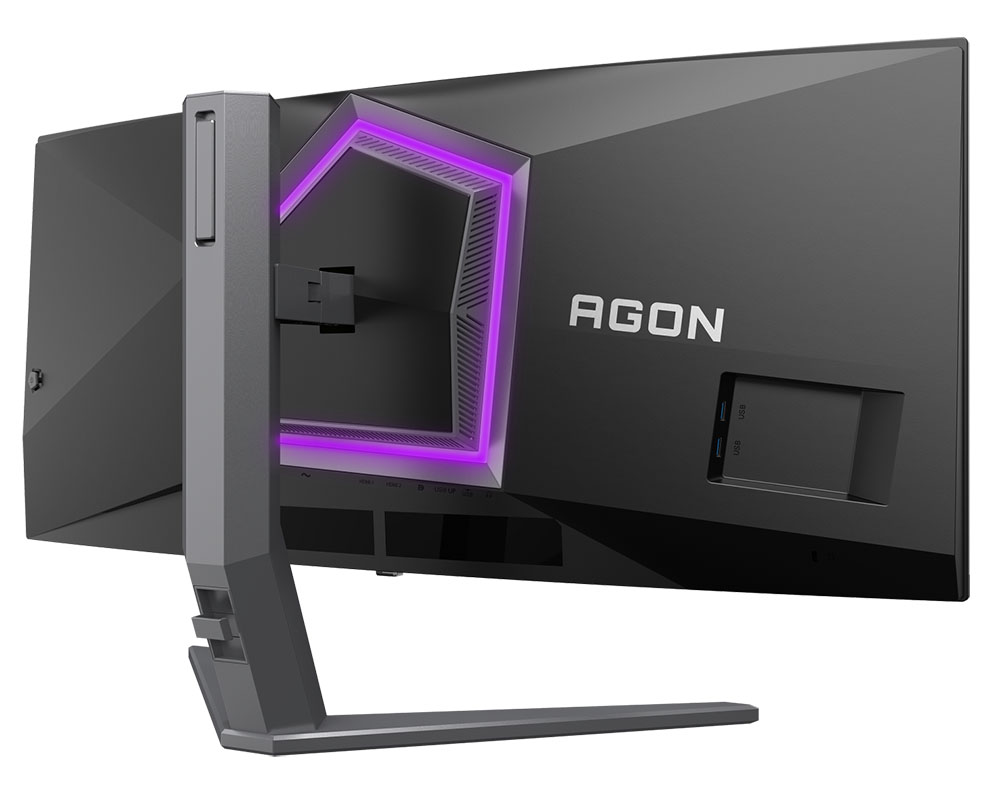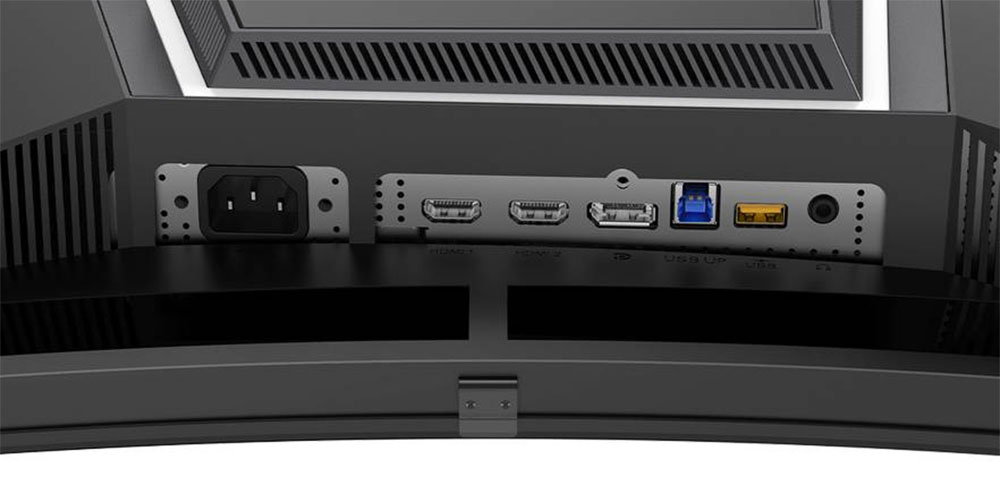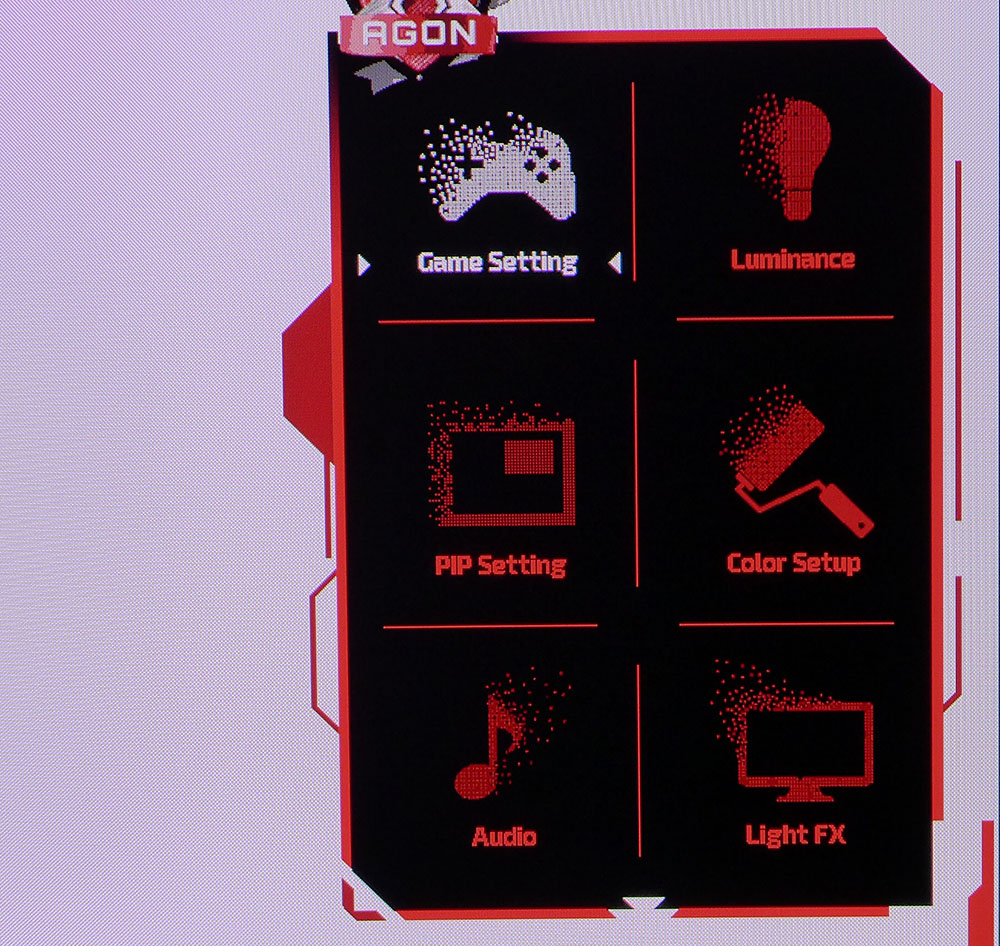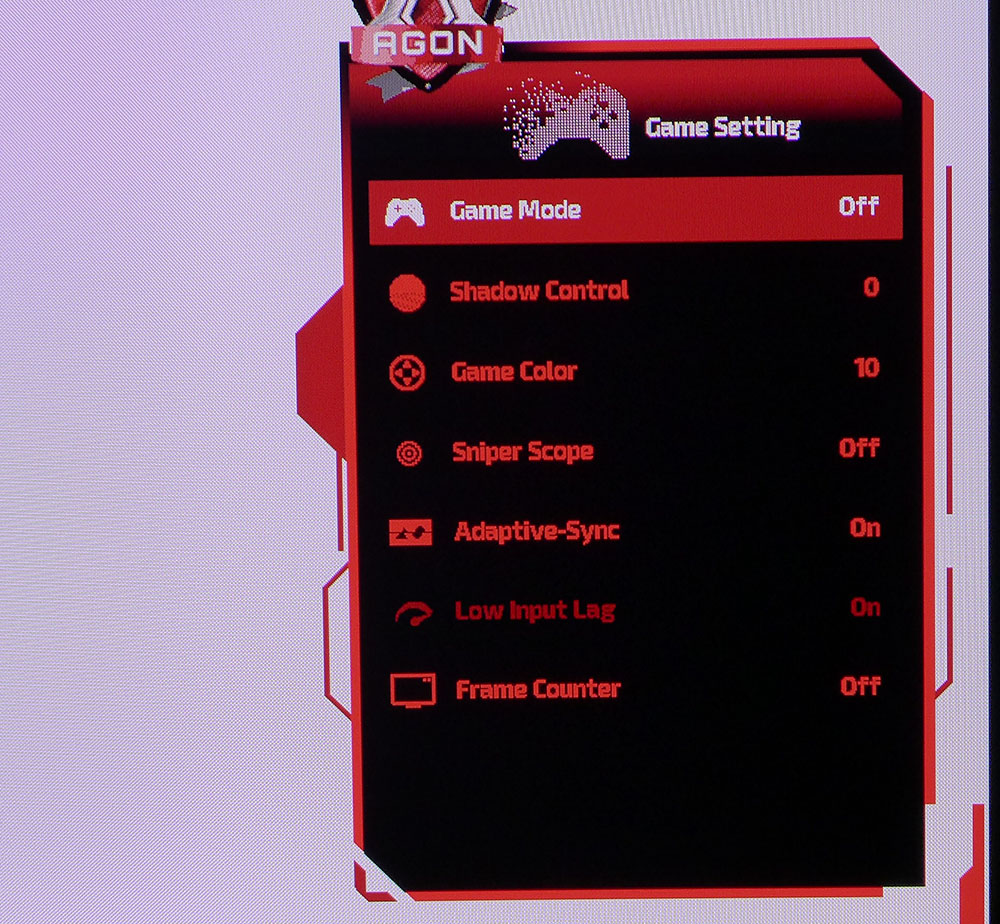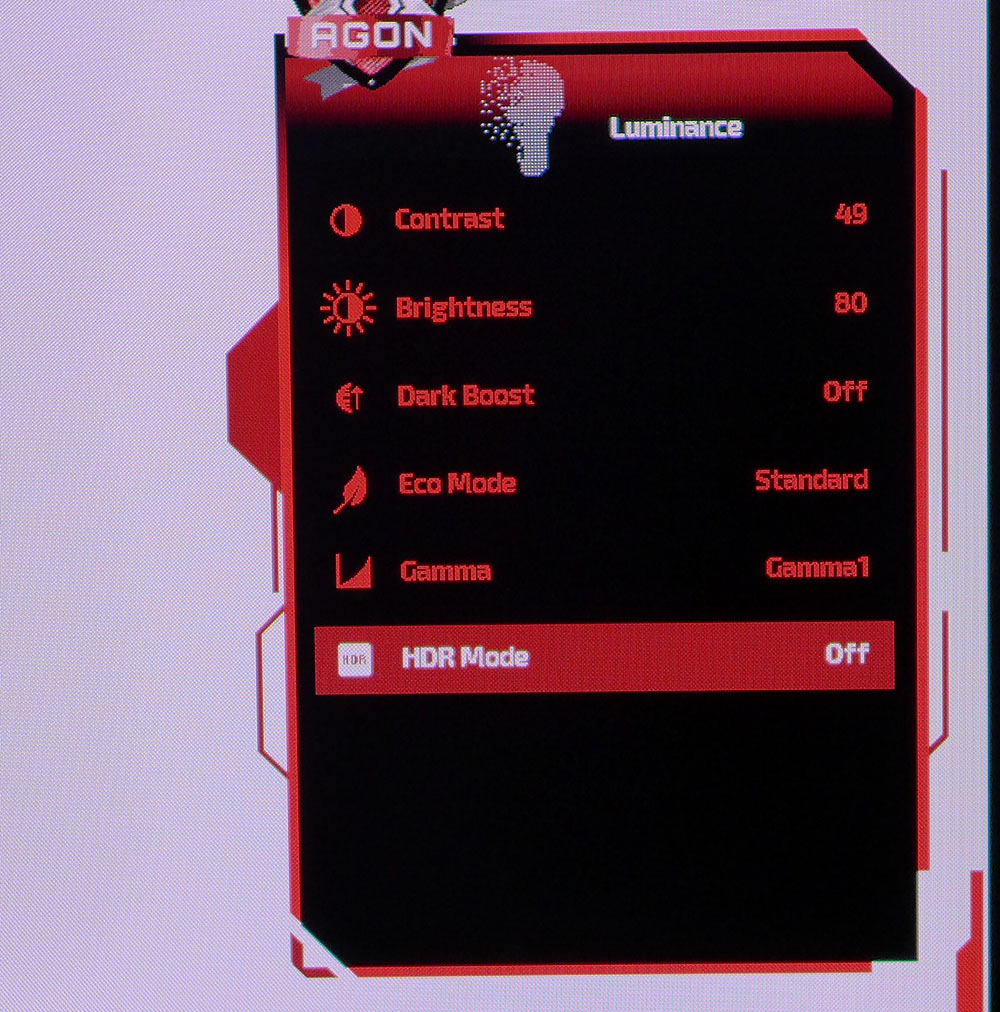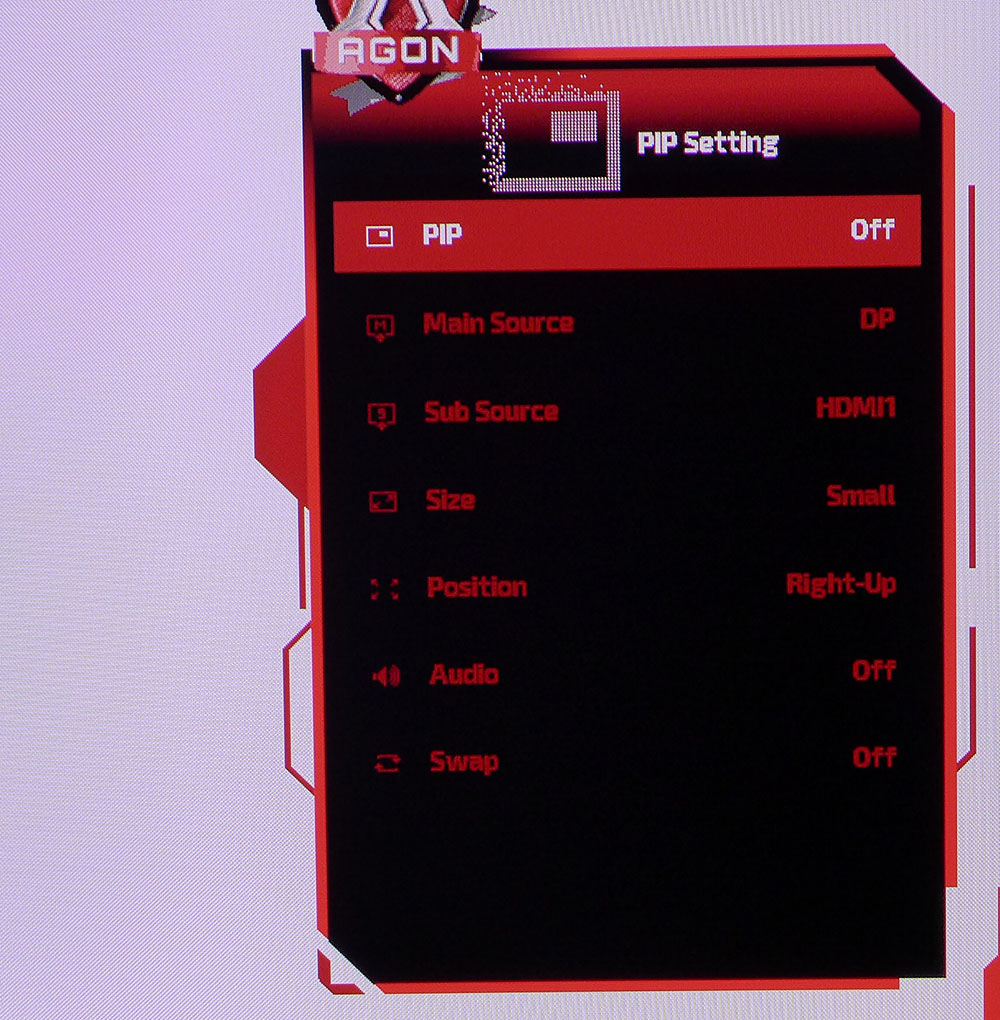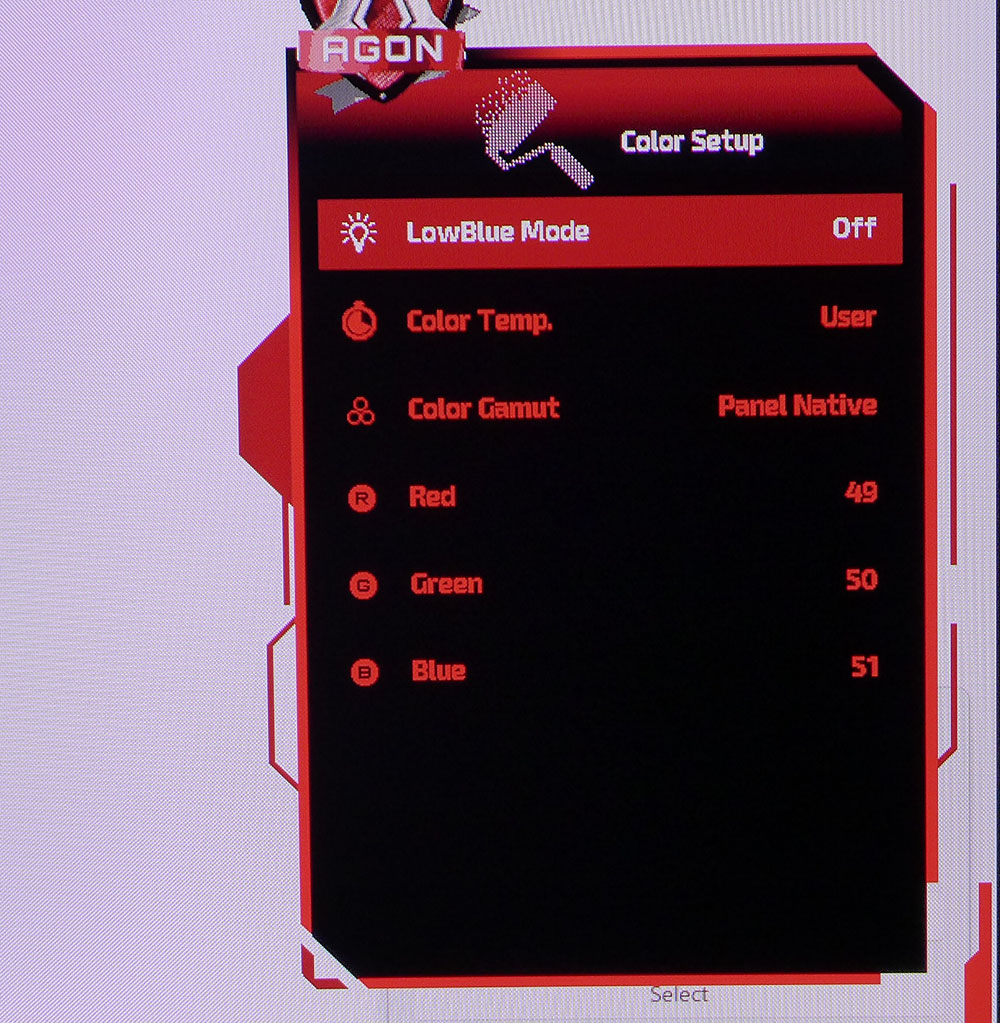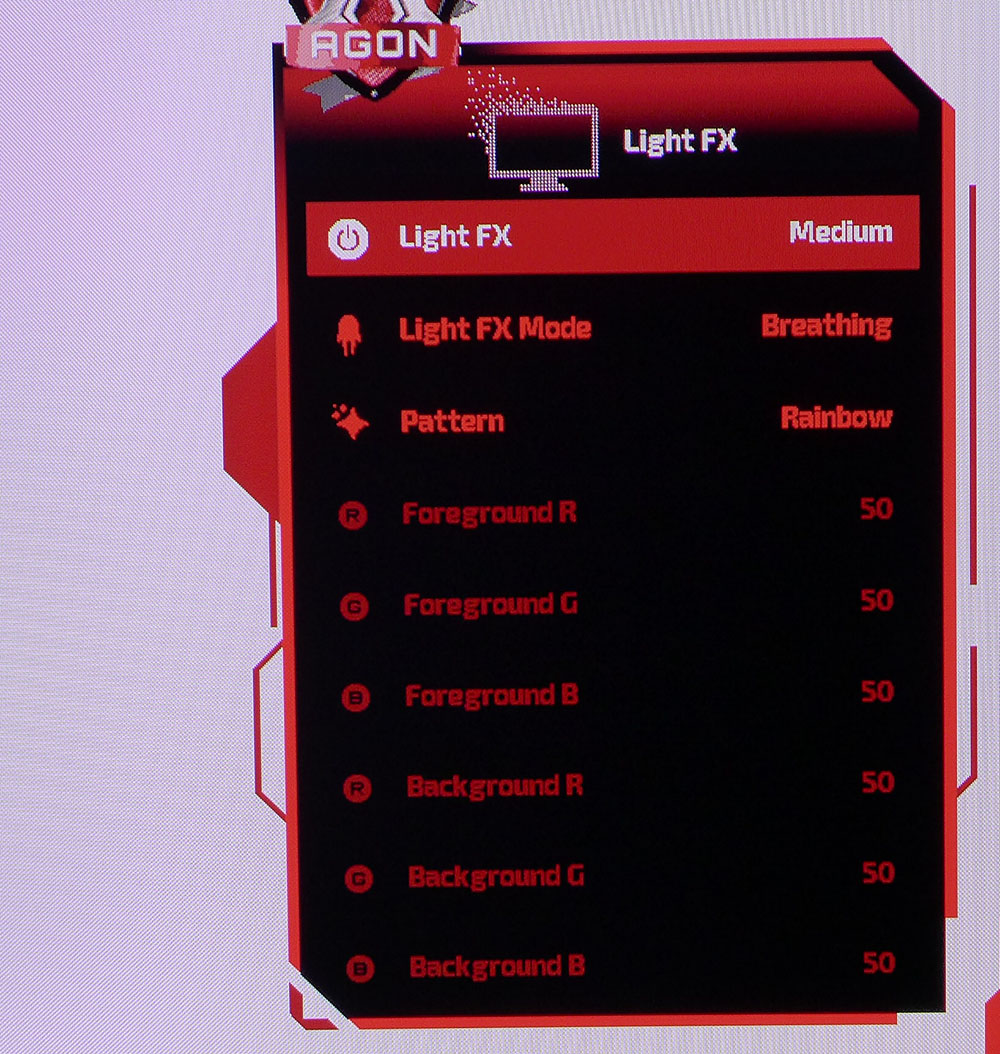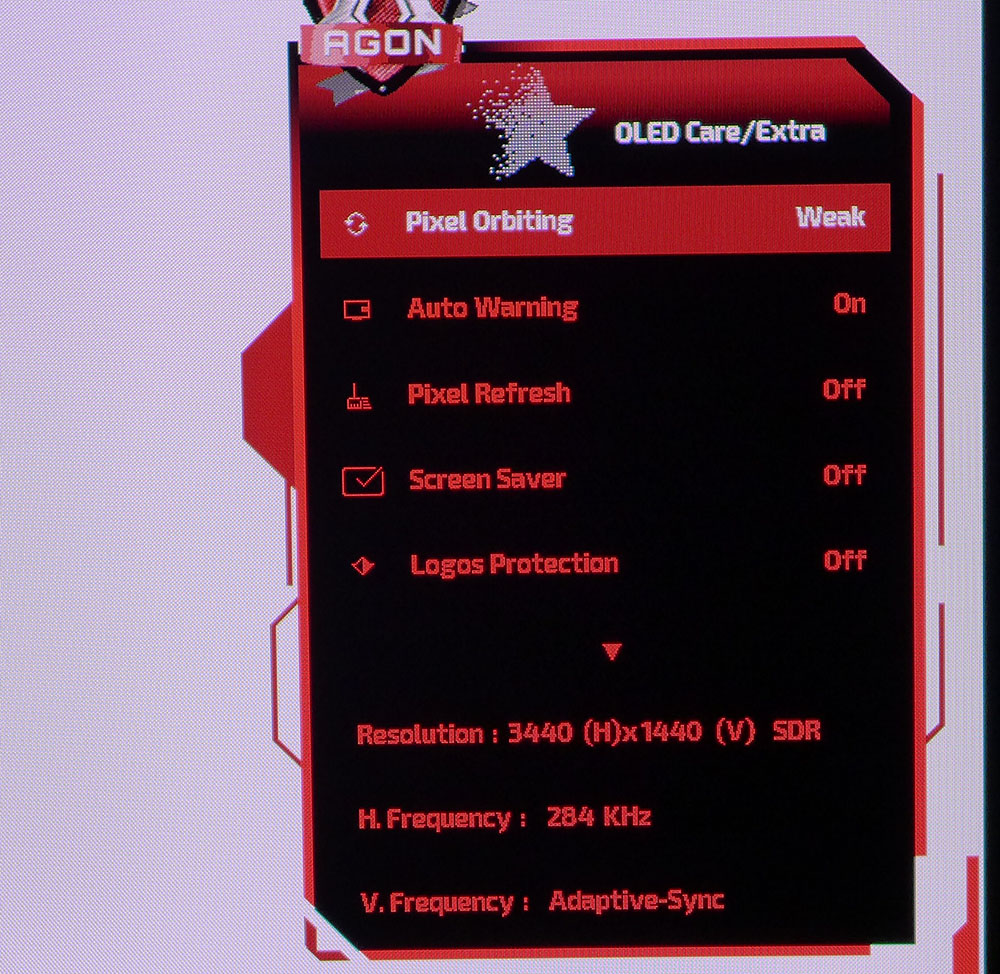With so many of the best OLED gaming monitors appearing regularly from every major and minor manufacturer, my review opportunities have been prolific. And with no significant exception, their imaging and gaming performance differs by mere minutia. As long as the refresh rate is over 150 Hz, you can expect to see no motion blur and experience low input lag. Perfect black levels and large color gamuts mean a stunning image that outguns the best LCD can offer.
Buying choice comes down to size, shape, and price. In the 34-inch curved ultra-wide 21:9 category, prices hover around $800 for the speediest models running at 240 Hz. But for $650 at this writing, you can have the AOC Agon AG346UCD. It runs at 175 Hz with Adaptive-Sync at WQHD 3440×1440 resolution. It also delivers HDR and a wide color gamut courtesy of Quantum Dot technology. Let’s take a look.
AOC Agon Pro AG346UCD Specs
Panel Type / Backlight | Quantum Dot Organic Light Emitting Diode (QD-OLED) |
Screen Size / Aspect Ratio | 34 inches / 21:9 |
| Row 2 – Cell 0 | Curve radius: 1800mm |
Max Resolution and Refresh Rate | 3440×1440 @ 175 Hz |
| Row 4 – Cell 0 | FreeSync and G-Sync Compatible |
Native Color Depth and Gamut | 10-bit / DCI-P3+ |
| Row 6 – Cell 0 | HDR10 |
Response Time (GTG) | 0.03ms |
Brightness (mfr) | 250 nits |
Contrast | Unmeasurable |
Speakers | 2x 8w |
Video Inputs | 1x DisplayPort 1.4 |
| Row 12 – Cell 0 | 2x HDMI 2.0 |
Audio | 3.5mm headphone output |
USB 3.2 | 1x up, 3x down |
Power Consumption | 39.5w, brightness @ 200 nits |
Panel Dimensions WxHxD w/base | 31.9 x 16.6-21.7 x 11.6 inches (811 x 422-551 x 294mm) |
Panel Thickness | 5.1 inches (130mm) |
Bezel Width | Top: 0.3 inch (8mm) |
| Row 19 – Cell 0 | Sides: 0.4 inch (10mm) |
| Row 20 – Cell 0 | Bottom: 0.7 inch (18mm) |
Weight | 23.8 pounds (10.8kg) |
Warranty | 4 years |
I won’t build suspense here. The AG346UCD doesn’t offer the 240 Hz and high brightness of Acer’s Predator X34 OLED. But that monitor is $900, and though it is awesome, it won’t perform 28% better. AOC offers a lot of gaming performance and image goodness at a reasonable price compared to other OLEDs.
The panel features Quantum Dot tech which expands the color gamut comfortably past 100% of DCI-P3. AOC claims 99%, but I measured over 112%, a new record in my ever-growing test database of which the AG346UCD is the 414th member. Out-of-box accuracy is good enough to skip the calibration step, but a few tweaks take the numbers to reference-level.
As a curved 21:9 panel, the AG346UCD creates an immersive feel, but the 1800R radius is gentle. When looking at spreadsheets, there is no image distortion, so it is fit and ready for the workday. But gaming is the focus; to that end, you get aiming points and a sniper mode. There’s also a nice pair of internal speakers with eight watts of power that provide good sound with surprisingly good bass. If you enjoy a light show, there are colored LEDs in the back called Light FX that accentuate the monitor’s angular styling.
Gaming is also supported by a 175 Hz refresh rate, which is lower than the 240 Hz OLEDs I’ve regularly seen. Motion blur is almost non-existent but not entirely eliminated. It’s more visible if you’ve seen as many fast screens as I have. But as you’ll see, there is no impact on input lag; it’s extremely low. The AG346UCD supports FreeSync, G-Sync, and VRR for consoles.
Where is the sacrifice, you ask? It’s brightness, specificlly HDR brightness. The AG346UCD peaks around 237 nits, which is lower than most. If you’re familiar with OLEDs, you know that is a typical number for monitors with their variable brightness feature turned off. The AG346UCD does not have that option, so you’ll miss the bright highlights that make HDR content stand out.
Are these sacrifices worth getting a 34-inch OLED gaming monitor for $650? Once you see the test results, you’ll agree they are. The AG346UCD is an undeniably good value.
Assembly and Accessories
The AG346UCD’s package contents must be extracted from crumbly foam before assembly. I noted the base which is a seriously thick chunk of metal. It weighs more than some entire monitors. Only a concerted effort will knock it over. After attaching the upright with a captive bolt, the panel attaches to the fulcrum with two included fasteners. If you’d rather use an arm, there’s a substantial bracket in the box with screws provided. The cable bundle contains HDMI, DisplayPort, and USB.
Product 360
The AG346UCD displays its Agon branding on the front bezel and in the back. The distinct design element is a hexagon with five unequal length sides. This shape surrounds the stand fulcrum and is ringed by ventilation and an LED array. Effects and colors can be controlled in the OSD. The upright is also a hexagon with a flip-out headphone hook and a small cable management clip incorporated. The panel is finished in black with gray trim while the stand is all gray.
Ergonomics include 3/21 degrees tilt and 16 degrees of swivel. The height range is 130mm (5.1 inches) and moves with a slight click so you can easily lock in your preferred position. The single control is a large joystick that manages power and OSD navigation. You can opt for Windows desktop control using AOC’s G-Menu app.
You may have noticed something cool in the side profile photo above. Yes, the AG346UCD has side USB ports. This feature used to be more common, but now is a rarity. It’s great to see because it’s very convenient. Fishing underneath to plug in a mouse and keyboard is a pain, if you even get USB ports. There’s no KVM though. The video input panel includes two HDMI 2.0 and one DisplayPort 1.4 along with the USB upstream and one more downstream port. You also get a 3.5mm headphone jack. The internal speakers play nice and loud with no significant distortion and decent bass. They’re driven by eight-watt op-amps.
OSD Features
The AG346UCD’s OSD has the same look as all Agon monitors. It has a vertical screen trimmed in sci-fi graphics, with red text on a black background. The bottom ribbon is organized like the one on AOC’s rank-and-file monitors.
There are eight menus in total, starting with Game Setting where you’ll find a selection of game modes that operate separately from the picture modes. The best way to avoid confusion is to leave this off. Shadow Control is provided if you have trouble seeing in dark places. The sniper scope occupies a large window at center screen and features three magnifications. If you want to track the fps count, turn on the Frame Counter. There are aiming points available by down-clicking the joystick. Depending on the background, you can have a fixed red cross or one that changes between black and red.
In the Luminance menu, you’ll find seven Eco modes or picture modes. Standard is the best choice and conforms closely to industry standards. You can enjoy it without adjustment, but I recommend a few tweaks for the best possible image. You also get three gamma presets and three HDR emulation modes. They alter the luminance curve to simulate HDR for SDR content. When HDR10 signals are present, two additional modes are revealed.
21:9 monitors are well suited for PIP and PBP use where you can view two video sources at once. The options here include window size and position and the ability to specify which one outputs audio.
Color options include three fixed color temperatures and a user mode with RGB sliders. You can also choose from Native, DCI-P3, or sRGB gamuts. However, picking one of the latter two will gray out all other image options, so I suggest sticking with Native.
The Light FX feature plays a show with the LED ring in back. You can enjoy a variety of effects and tweak colors to many different combinations. OLED care options are extensive with pixel orbiting and refresh plus dimming of static logos and screen borders like the HUDs in many first-person games. A screen saver can also be engaged.
AOC Agon Pro AG346UCD Calibration Settings
The AG346UCD measures well out of the box in its Standard picture mode with D65 grayscale, 2.2 gamma, and around 112% coverage of the DCI-P3 color gamut. Calibration is unnecessary, but reference-level accuracy is achieved with a few changes to the RGB sliders in the color menu and a one-click reduction in the contrast slider. I recommend avoiding the HDR emulation modes as they alter the luminance curve to the point where some highlight and shadow detail is obscured. There are two modes available for HDR signals. Display HDR has the best accuracy, and both it and HDR 1000 Max deliver the same peak brightness. My recommended SDR settings are provided below.
Picture Mode | Standard |
Game Mode | Off |
Brightness 200 nits | 80 |
Brightness 120 nits | 45 |
Brightness 100 nits | 36 |
Brightness 80 nits | 27 |
Brightness 50 nits | 15 (min. 16 nits) |
Contrast | 49 |
Gamma | 1 |
Color Temp User | Red 49, Green 50, Blue 51 |
Gaming and Hands-on
If you’ve hesitated to pull the trigger on a curved monitor because you work more than play, the AG346UCD is a great choice. It has a relatively slight 1800R curve, which means it is “only a little curved.” There is no image distortion, and when you’re crunching numbers in a spreadsheet or writing your next novel in Word, you won’t even notice the curve. It is every bit as useful and functional as a flat panel. Its size is practical as well. It’s wide but not tremendously so. You’ll need 32 inches of space to accommodate the width and 12 inches to sit the large but slender base. The legs are skinny so there’s plenty of room to let papers pile up.
The image is bright enough for the workday and when dialed back to a comfortable 200 nits peak, you can stare at the screen for hours without fatigue. Color is beautifully saturated, and contrast is just as wonderful as any OLED. For SDR content, there is almost no difference in image quality between OLEDs. You will notice the extra punch of those Quantum Dots though. The AG346UCD is the most colorful monitor I’ve yet tested.
You’ll see later in my tests that it isn’t as bright as other OLEDs. That is because it lacks a variable brightness option. If you were to turn it off on a screen that has it, you would see roughly the same peak as the AG346UCD offers. The problem happens when you switch to HDR mode. Most graphics-driven games today offer HDR, and an OLED is typically the best way to experience it. The AG346UCD let me down a little here. It doesn’t offer any more brightness, meaning the peak is around 236 nits for SDR and HDR. And I noted some undersaturated color in the most vivid parts of the image. You’ll see what I mean on page five when you check out the HDR tests. However, the contrast I expect from an OLED is there, and the AG346UCD maintains an edge over LCD technologies.
When it comes to the more essential parts of gaming feel, response, and motion processing, the AG346UCD excels. Though it runs at 175 Hz, it matches many 240 Hz OLED screens with extremely low input lag. When looking very closely, I could see a little motion blur in test patterns. But when gaming, there was no blur. Every detail, near or far, was rendered perfectly. Fast movements showed no breakup or stuttering. My aim was precise, and my movements were exact.
Takeaway: The AG346UCD is positioned as a value choice, and it easily meets that goal. It delivers excellent gaming performance with low lag and smooth motion processing. It has beautifully saturated SDR color and is extremely useful for everyday tasks. My only complaint is that it doesn’t have the bright HDR highlights one expects. And there are HDR color anomalies which appear as undersaturation of the most vivid shades. Considering it’s a 34-inch ultra-wide OLED for $650 though, I can’t complain too loudly.
MORE: Best Gaming Monitors
MORE: How We Test PC Monitors
MORE: How to Buy a PC Monitor






